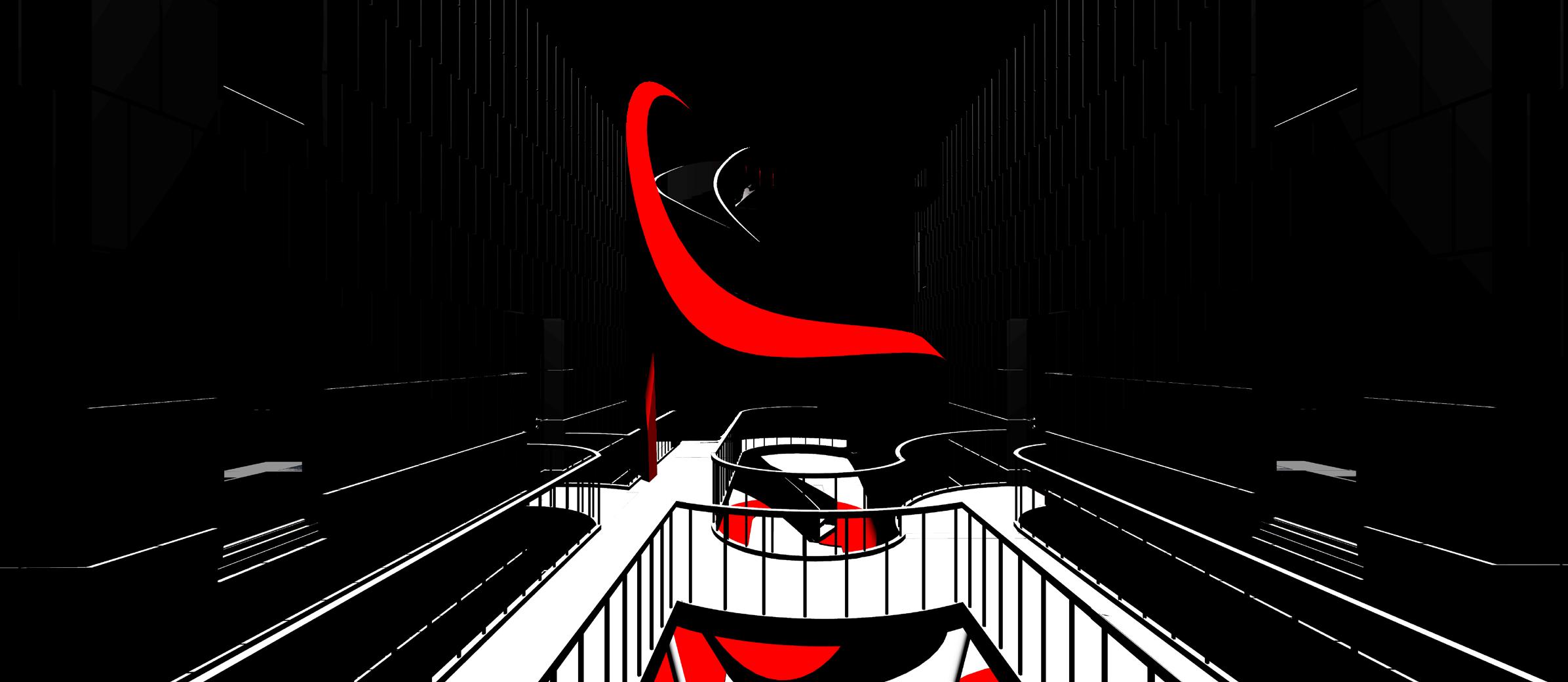WALKING IN BETWEEN
Lorem ipsum dolor sit amet, consectetuer adipiscing elit, sed diam nss euismod tincidunt ut


Lorem ipsum dolor sit amet, consectetuer adipiscing elit, sed diam nss euismod tincidunt ut





The traditional bungalow court balances order and chaos by arranging identical small homes around a shared central garden, creating a peaceful, communal atmosphere. While the architecture remains formally consistent and orderly, the life within—gardening, gathering, improvising—adds a layer of spontaneous, lived-in chaos.

A step out means unpredictability.

A step in means control.

Section of LIFE in a typical bungalow court typology.



Section of ARRANGEMENT in a typical bungalow court typology.


Section of MOVEMENT in a typical bungalow court typology.
















In the vertical version, horizontality is interpreted through stacked units, with shared spaces like staircases and terraces becoming new thresholds. These vertical connections offer residents privacy and community, balancing the complexity of the design.


This shift plays with chaos and order, where stepping out means engaging with a dynamic environment, while stepping in offers personal, contained space. The vertical layers amplify the experience, blending openness and intimacy in a new urban context.


A final platform spirals outward, symbolizing the attempt for clarity, but remains unfinished—reflecting life's unresolved nature.
The spiral tightens, embodying mid-life reflection and the internalization of life's deeper questions.
The fractured second platform symbolizes the struggle of adolescence and early adulthood against societal pressures.
A dual-loop form expresses the optimism and chaos of birth, full of potential and energy.

Transforming
Chaos, on the other hand, embodies spontaneity and unpredictability, where the absence of structure allows for transformation, growth, and unexpected connections.




This contrast — between rigid order and shifting chaos — mirrors our daily experience. It is the same tension we find in Lennon and McCartney, in Greek tragedy, in Zen koans, in a Dylan line or Shakespeare play. And here it is, expressed not in a monumental cathedral or a giant statue representing a historic battle, but in humble domestic architecture. A few bungalows facing each other. A path. A tree. A bench.
The bungalow court tells us something profound: that our lives, like our spaces, are shaped in the in-between.


Ultimately, this project is not just a housing typology. It is an architectural proposal for living with contradiction, that has been and should continue to be used: balancing repetition and uniqueness, structure and openness, solitude and collectivity. It proposes that even in a world where space is limited, simplicity must be evident and constraints are many, architecture can still honor the full complexity of human life — not by resisting chaos or drowning in order, but by embracing the battle between the two of them.
In the grand spectacle of existence, life presents itself This interplay between opposites has captivated humanity’s expressed itself through countless songs, paintings, prompting reflections on the structures — both literal

itself as a perpetual dance between chaos and order. humanity’s interest for thousands of years and has paintings, books, plays, conversations, and buildings, literal and metaphorical — that frame our experiences.



